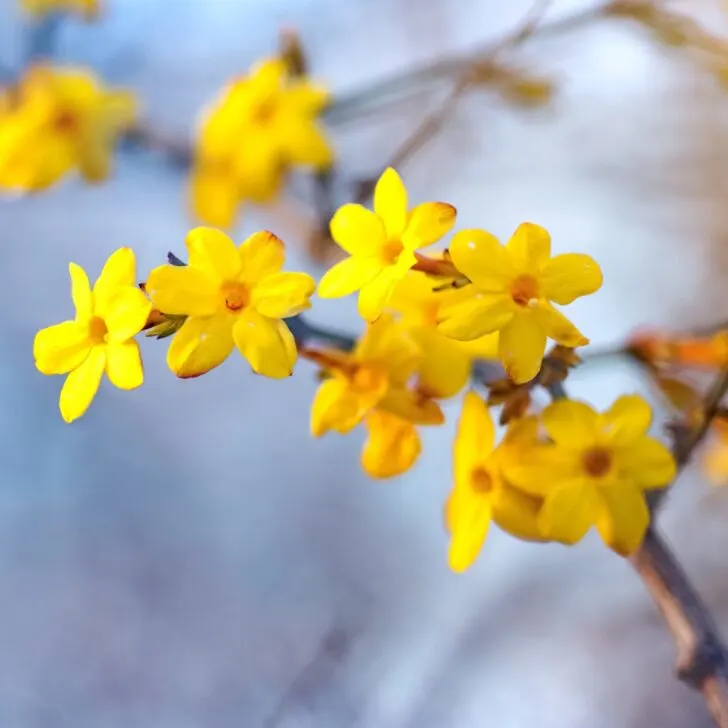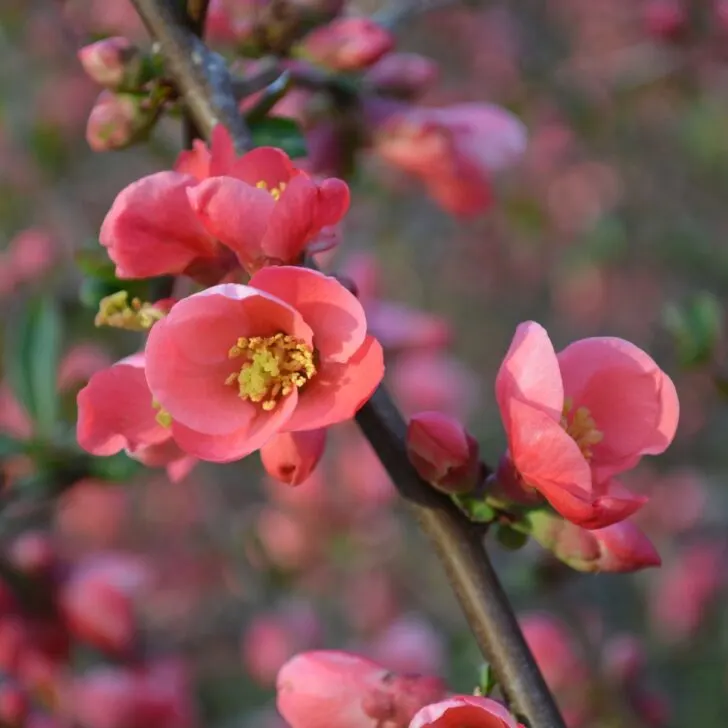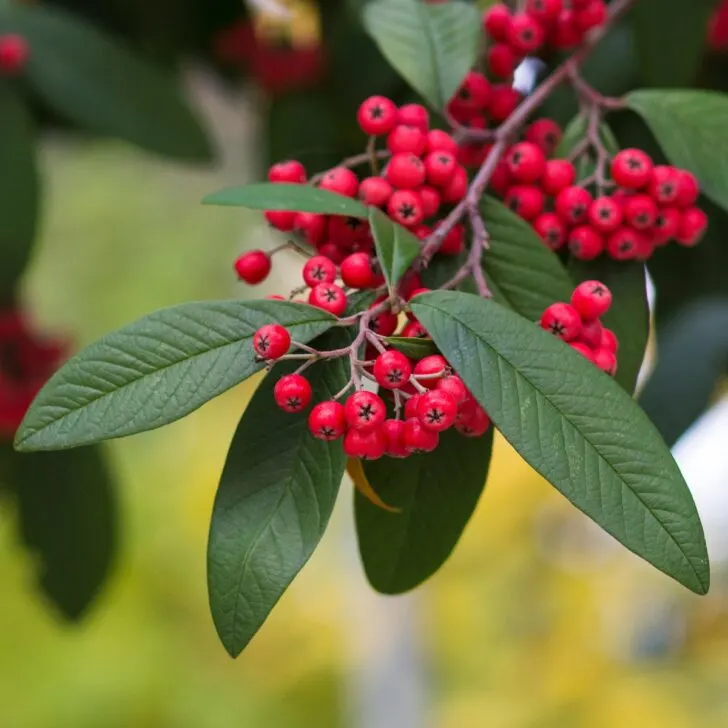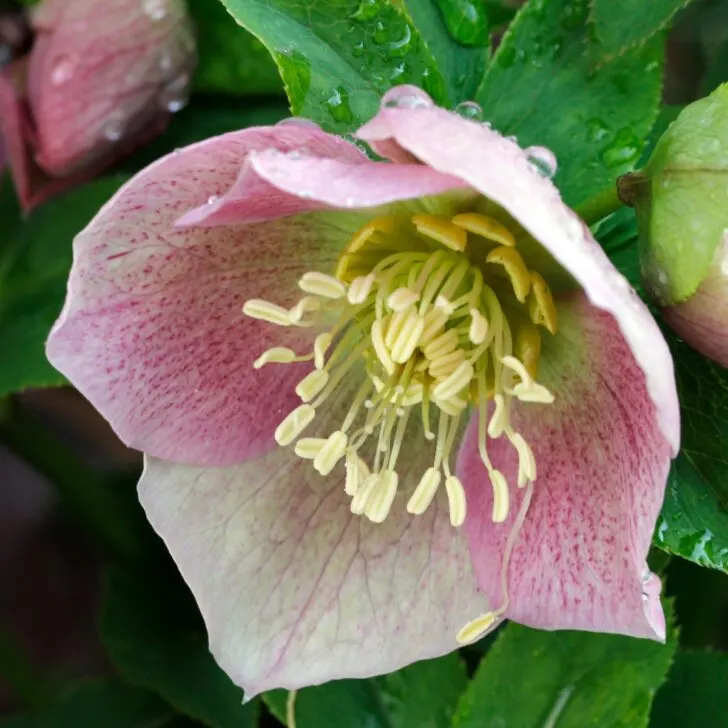The brightly colored blossoms of camellias can liven up your garden when everything else is dormant in the winter and early spring.
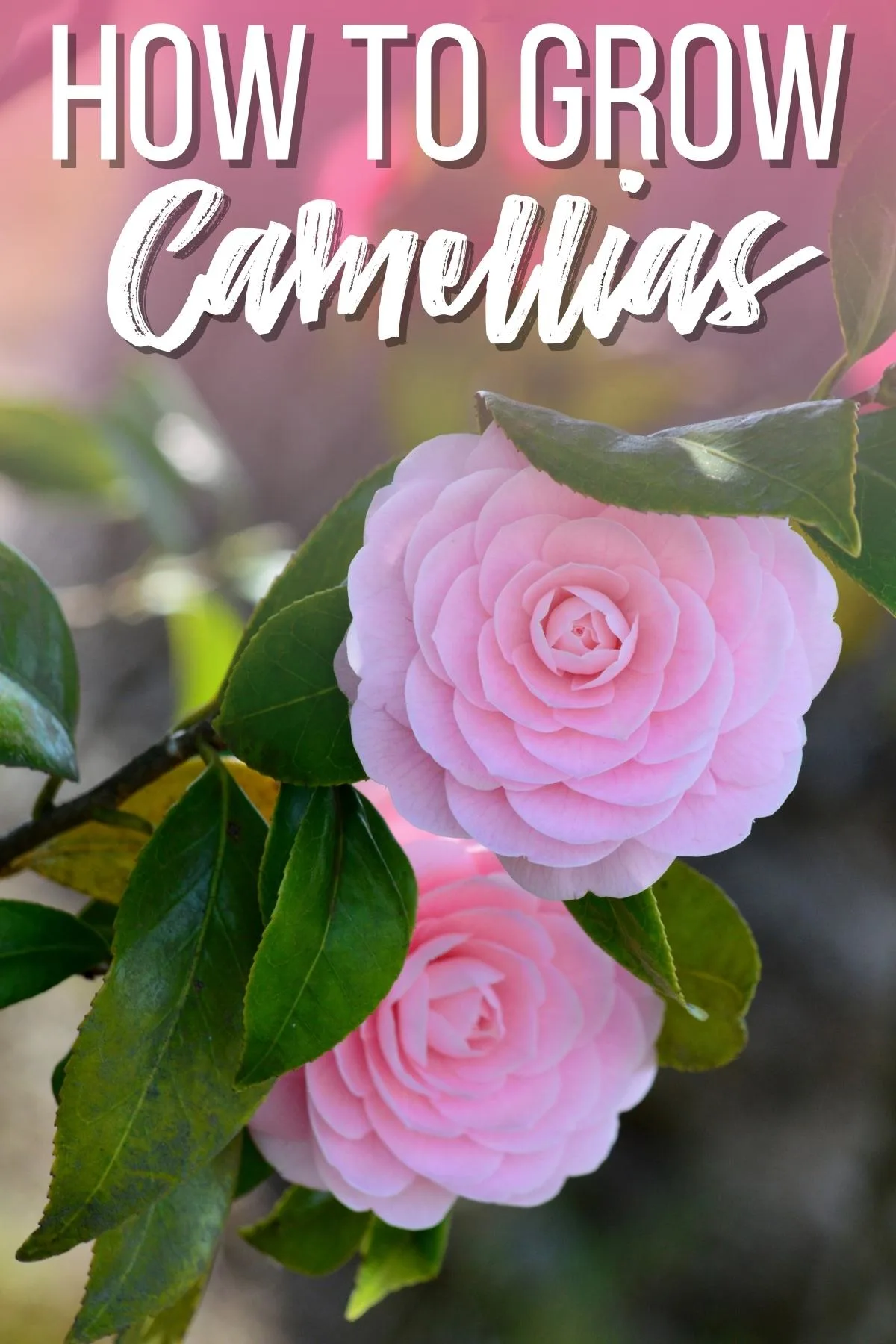
Camellias are tropical-looking shrubs that start producing a profusion of cheerful flowers in late winter that keep going until April. For the rest of the year, the dark-green, leathery, evergreen leaves provide an attractive backdrop in the landscape.
Camellias are easy to grow, requiring little maintenance. They thrive and bloom in the shade, making them ideal for the darker corners of your garden. These hardy shrubs are also exceptionally long-lived, with a recorded lifespan of up to 500 years at the Imperial Palace in Japan.
This post contains affiliate links for your convenience. Purchases made through these links may earn me a small commission at no additional cost to you.
Camellia Cultivars
You won’t find any shortage of choices when looking for camellia cultivars that are perfect for your garden! The American Camellia Society has registered over 2,300 varieties that differ in mature shrub size, flower size, bloom time, flower color, and flower type.
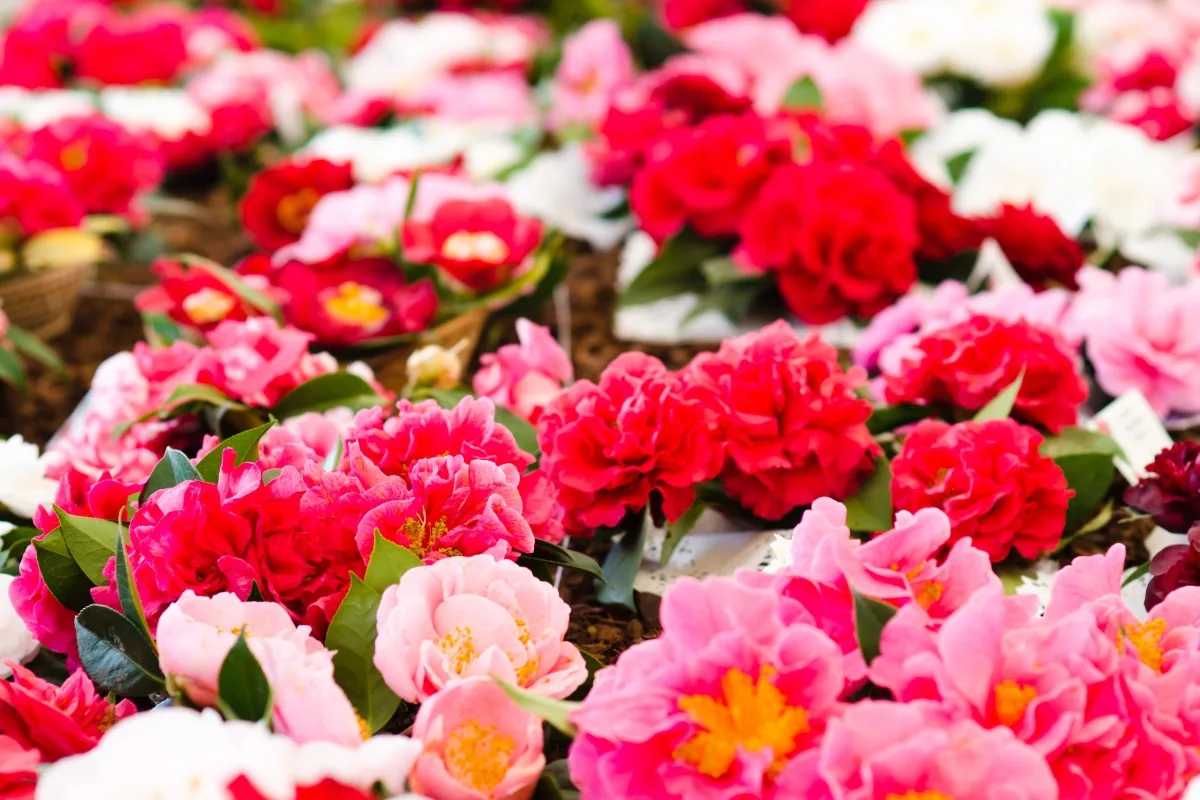
Camellia flowers come in multiple shades of red, white, pink, variegated, and even a few with lavender blossoms. Flower petal forms include single, double, formal double, and semi-double. Most flowers do not have a fragrance, but a few cultivars have a scent.
Dwarf shrubs grow into a pleasing mound shape of five to seven feet in height and 4-5 feet in diameter. Full-sized camellia bushes can reach up to 25 feet tall, although ten feet tall and wide is more typical. Camellias are slow-growing, but you can also find fast-growing cultivars that make excellent hedges.
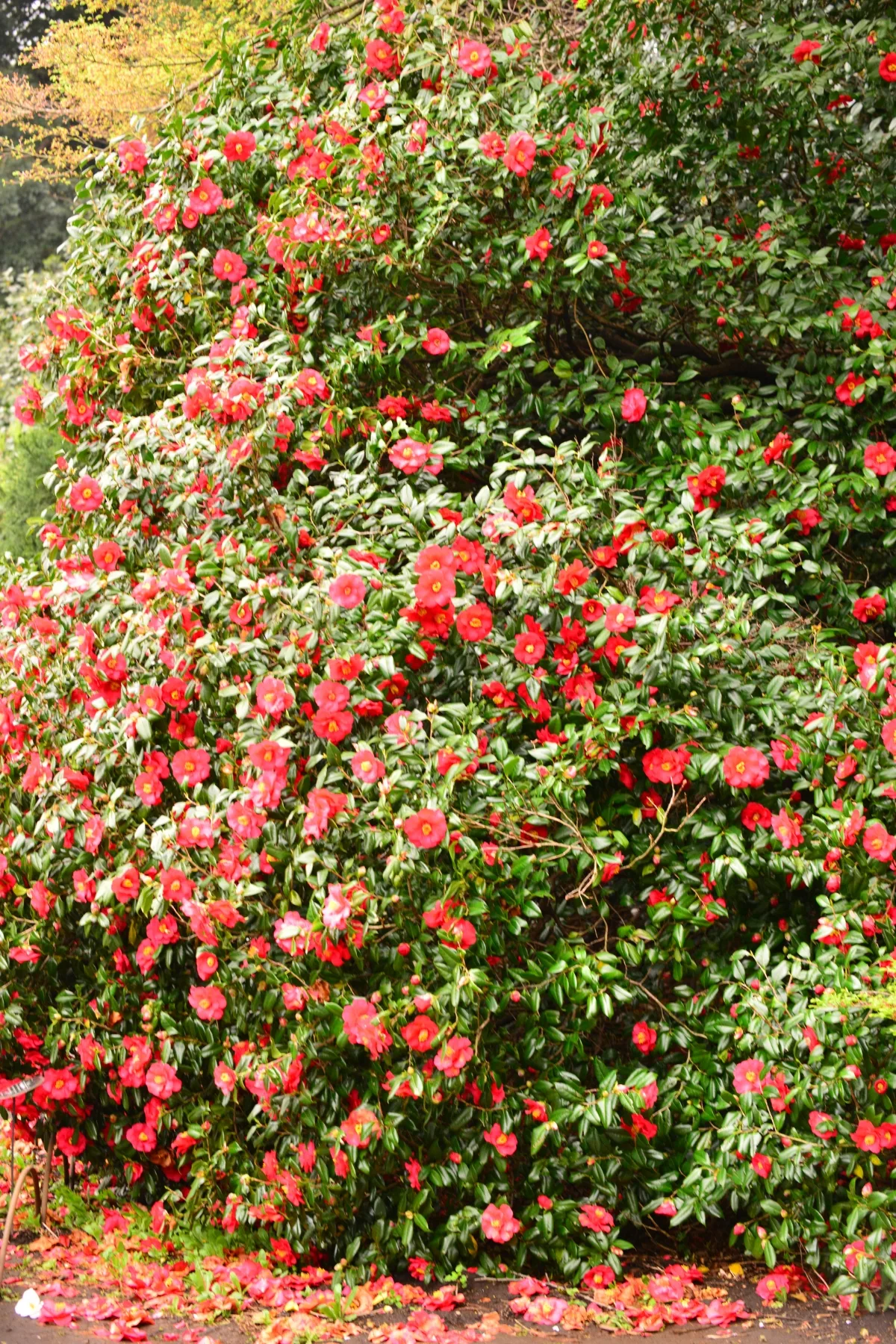
When to Plant Camellias
You can plant a camellia any time of year as long as you prepare the site correctly and provide adequate water after you plant. However, the optimum times for planting are between October and November in warmer geographic areas and March and April in cooler growing zones.

Most camellia cultivars are tolerant of frost, but there is also variation in temperature tolerance between different types. Temperatures between 10° to 90°F is typical, but the hardiest cultivars can survive down to 5°F.
Where to Plant Camellias
Gardeners often use camellias as specimen plants and borders in areas with full to partial shade. Their large size and dense branch structure make them useful as a living screen or a beautiful winter and spring-blooming hedge. In addition, because they grow well in deep shade, this can be an ideal plant for a garden area with minimal sun.

When planting a camellia, keep in mind the plant’s mature size. They often reach over ten feet high and wide, so be sure to give the plant adequate room for its final size.
Another consideration when choosing a planting site is that camellias do not compete well for water. Therefore, they are best planted away from other plants with high moisture demands.
Camellias thrive when protected from full sun exposure and wind that can dry out the leaves and flowers. They prefer well-drained, fertile soil, so choose or prepare a site that fits these requirements.
How to Plant Camellias
Dig a planting hole twice the size of the potted plant’s root ball. Chop out roots from shrubs, trees, and other plants that could deprive the camellia of water as its roots become established.

As you dig, remove large rocks and break up clumps of clay soil. Camellias like soil high in organic matter and slightly acidic, so amend with compost, do a soil pH test, and adjust conditions as needed. Adding compost to the bottom of the hole helps the roots grow quickly.
Place the transplant in the hole, so the top of the potting soil is about an inch above ground level to keep water from pooling at the base of the plant. Backfill around the roots with fertile soil, then water the plant thoroughly once it’s in the ground and regularly after that.
Caring for Camellias
Water
Camellias need regular watering. Buds for the next year are set during the summer, so make sure to provide plenty of water during this time for optimum blooms. A heavy layer of mulch around the plant’s base conserves soil moisture and helps protect the roots from temperature fluctuations and competing weeds.
However, once the plant reaches full size, mulching might not be necessary because the branches and leaves provide a canopy, protecting the roots, shading weeds, and retaining moisture in the soil.
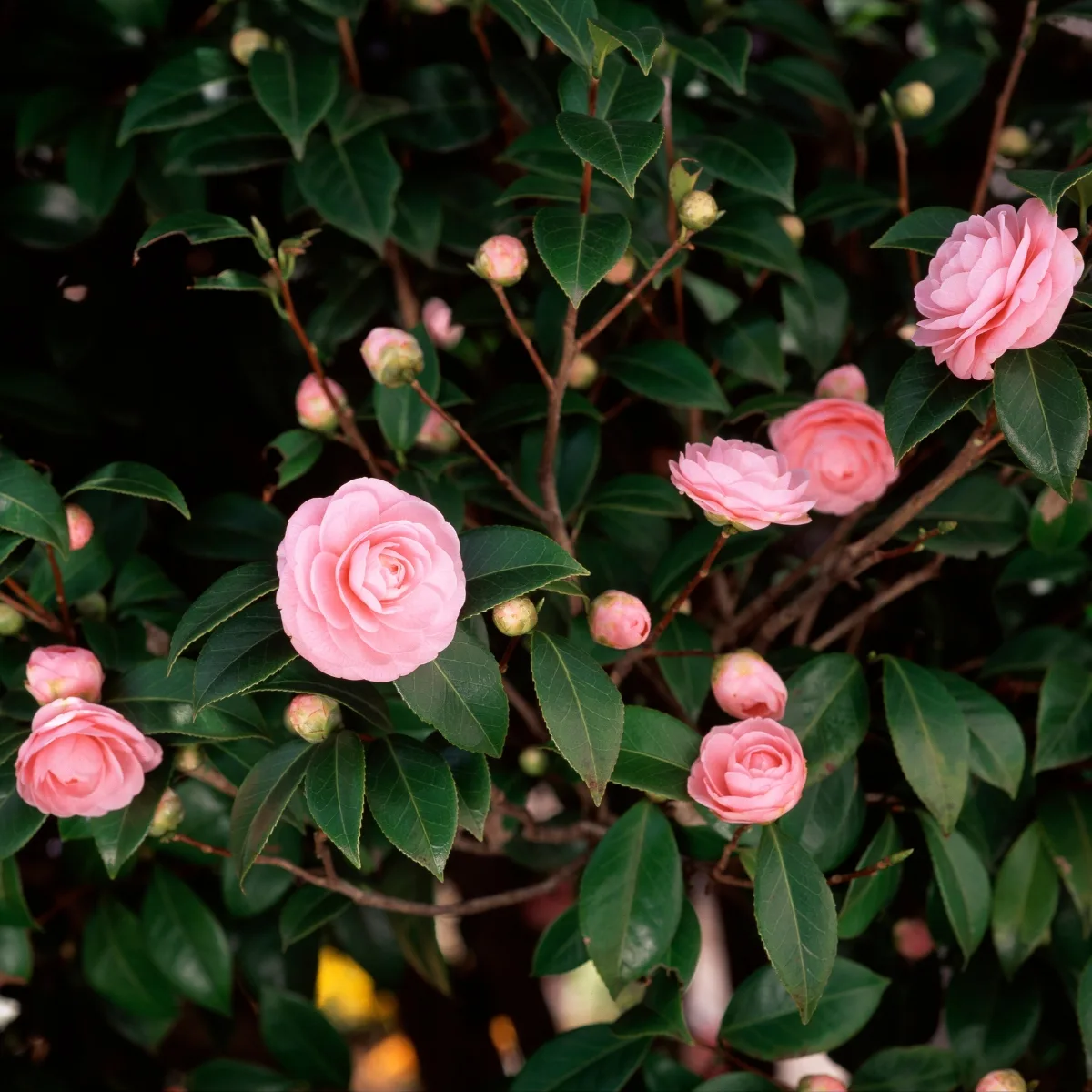
Camellias often have more buds than can mature, so don’t be concerned if you see some buds fall off when the plant starts blooming. However, if the bud drop is excessive, it can signify the plant needs more water.
Fertilizer
Fertilize annually with a product designed for camellias and azaleas. I prefer these fertilizer spikes, which slowly release nutrients into the soil over time. Wait until after the shrub has finished blooming, then stick a few spikes into the soil around the plant's roots.
Pruning
You don’t need to prune camellias beyond removing dead and damaged branches and shaping the plant to keep it tidy and attractively shaped. Buds for next year's blooms are produced during the summer, so prune right after the petals drop for the best results.
Pests
Camellias do not have many pests or disease problems, but scale insects, aphids, and petal blight sometimes happen. You can usually remedy these problems by using an insecticidal oil spray or other insecticide and planting a cultivar best suited to your growing zone.
Frequently Asked Questions about Camellias
Camellias produce buds for next year's blooms over the summer, so if you pruned your camellia or didn't give it enough moisture during this growth period, you may not get any flowers the following year.
The best time to prune winter blooming camellias is when the flowers drop off in spring. This avoids cutting off the buds for next year's blooms.
Most camellias need dappled shade in order to thrive, and will get scorched leaves if planted in full sun. However, there are some varieties that can withstand more sunny spots, such as camellia sasanquas, which bloom in the fall.
Check out these other winter blooming plants!

